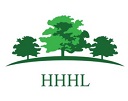



A History of Suffolk, Chichester, Phillimore & Co Ltd, 1985
One very unusual glimpse of ordinary villagers is afforded by the detailed returns for the Lay Subsidy of 1283 which survive, out of the whole of England, only for the Hundred of Blackbourn in north Suffolk. They list the crops grown and stock kept by the people of each parish. The large parish of Bardwell (3,142 acres) had 128 taxpayers ranging from the lord William de Pakenham who paid 17s. 10½d., to Botilda de Brakelond who paid only 3d. Here on the edge of of the sandy Breckland, barley was easily the most important grain grown, followed by rye; more peas and beans were grown than wheat and oats. With it's wide heaths, Bardwell had 1,313 sheep, but it also had plenty of other animals - 587 pigs, 456 cattle and 89 horses. The lord of course, owned most of the animals, including the only bull and the one boar. A fairly prosperous 'peasant' like Richard Hail grew four kinds of cereal, plus peas and beans, and owned two horses, five cattle and 11 sheep, whereas a poor man like Thomas Biscop grew only barley and had one cow, two pigs and five sheep.
The finest farm in the county was said by Arthur Young to be Westwood Lodge at Blythburgh, the property of Sir John Blois. The house was the former lodge of a park or warren, converted into a farmhouse in 1637, from it a tenant farmed about 3,000 acres of light land which, by enclosure, marling and dunging, had been made highly productive. (comment: Westwood Lodge marked as such on Old Series 1″ OS maps, seems to be renamed Blythburgh Lodge on later 61″ maps)
Well before 1700, the agriculture of Suffolk was experimental, innovatory and increasingly specialised. Central Suffolk was the first area in England to grow turnips as a field crop. The practice was established by the mid-17th century and provided a means of feeding cattle during winter and spring. Similarly, cabbages were grown on heavy land and fed to beasts which sometimes achieved record sizes. On the lighter land of the south-east, large numbers of carrots were grown, principally to support the growing population of horses. Clover was another popular crop from the mid-17th century onwards. 'Alternate husbandry', whereby certain crops were grown exclusively as fodder for animals, was now normal. This in turn led to new rotation of crops, usually covering four to six years. (comment: a couple of paragraphs on 'crag' and mechanisation) To the north-west of Bury a virtually medieval landscape of open-fields, heaths, sheepwalks and rabbit warrens was called the 'Fielding'. In 1764 Kirby described 'delicious champaign fields' still stretching for miles across the Breckland. For centuries this region had relied on two complementary 'crops' - corn and sheep. When the open-fields were fallow they were grazed, dunged and compacted by horned Norfolk sheep who thus contributed to the quality of the next harvest. (comment: some more irrelevance.. mention of Scots cattle drovers in East Suffolk having driven their cattle all the way from Scotland to fatten, then driven on to London. I had always assumed they came by sea to Suffolk!)
One reason for the progress of agriculture at this period was anew interest in diffusing knowledge. In 1784, de la Rochefoucauld commented, It is incredible how intelligent these farmers are, even the smaller ones … Experiments are made on a big scale by the great landowners and they are promptly taken up by the farmers
.
From 1793 to 1815, with one short break, England was at war with France. This long conflict disrupted the supply of goods from overseas, and doubled the price of food. Farmers, therefore, had an excellent opportunity , particularly if they were able to grow corn. Arthur Young commented that 'immense quantities' of pasture were ploughed up in Suffolk, and that some dairy herds were reduced to a tenth of their former size. In the words of one land agent, they grew wheat upon land where, in 1792, they never thought of it
.
The renewed depression of 1921-39 was not, however, so deep as that prior to 1914.
…
The Elveden estate even managed to make the Breckland productive, by combining cattle with with the growing of lucerne as a fodder crop.
In most parishes, 50 per cent of the landscape features recorded on 19th-century maps have been destroyed (in some places 70 per cent). They include hedges, ditches, road verges, green lanes, ponds, moats, woods and parish boundaries. All this happened without planning consent or public consultation, yet with the massive support of the taxpayer. Not surprisingly, this transformation has provoked much criticism and led to the development of an increasingly vocal conservation lobby.